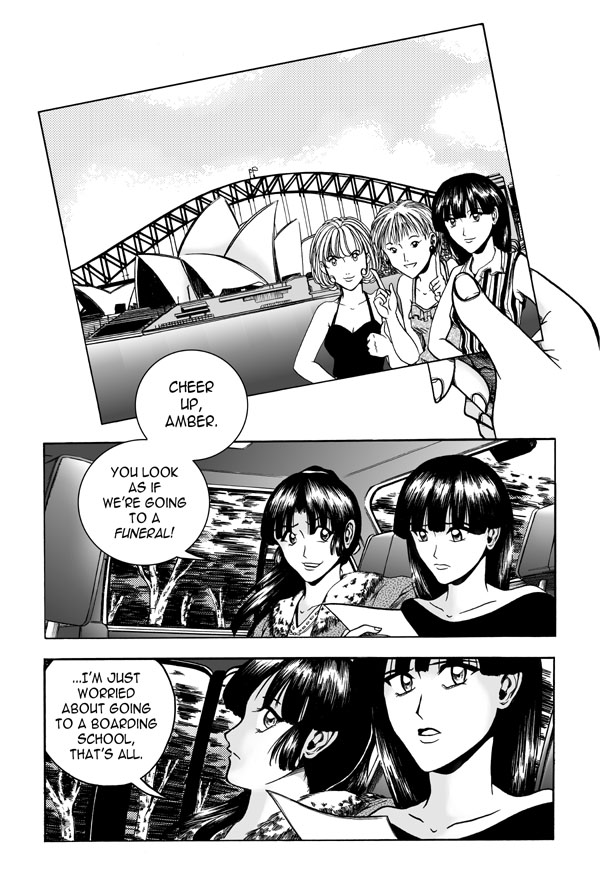This is a workshop I gave for the Sydney Comics Guild in February 2017, and I finally am putting it online. Before I go into the meaty bits, I have to clarify what this workshop covers and doesn’t cover:
- This post is not intended to teach you how to draw backgrounds. The basics of background drawing are widely available online, and mastering it simply requires practice.
- Instead, it aims to teach you some basic ideas of how to create architectural structures or clothing that are distinct from one another. In other worlds, world-building basics is one of its goals.
![]()
What is World-Building?
World-building is the process of constructing a reasonably believable fictional place or universe. This most commonly happens in the fantasy and sci-fi genres, but the truth is, creating a reasonably believable time and place is necessary for any kind of fiction.
The goal here is not to draw something generic-looking, but something specific-looking. Drawing generic-looking backgrounds is a basic skill in comics, but drawing something specific-looking requires vision and a unique visual style that could be attributed, at a glance, to a particular writer/artist or a particular story.
Case in point, my work for “The Dreaming” series:
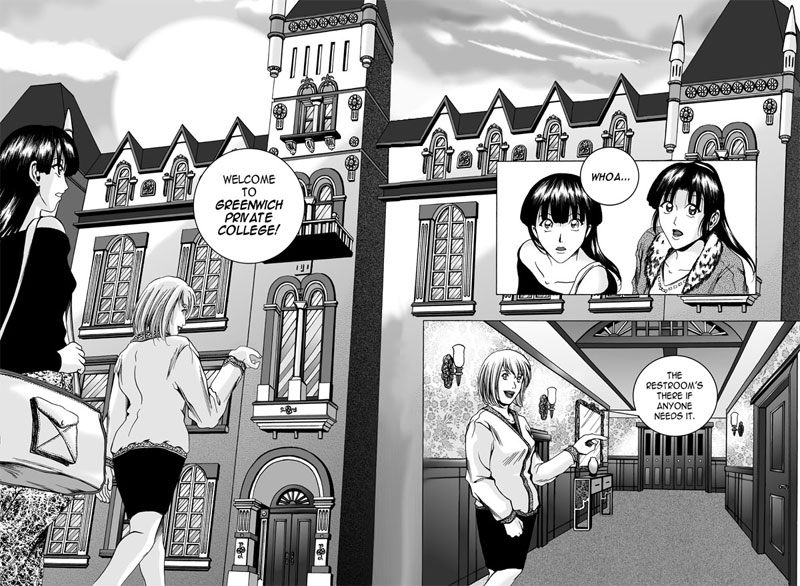
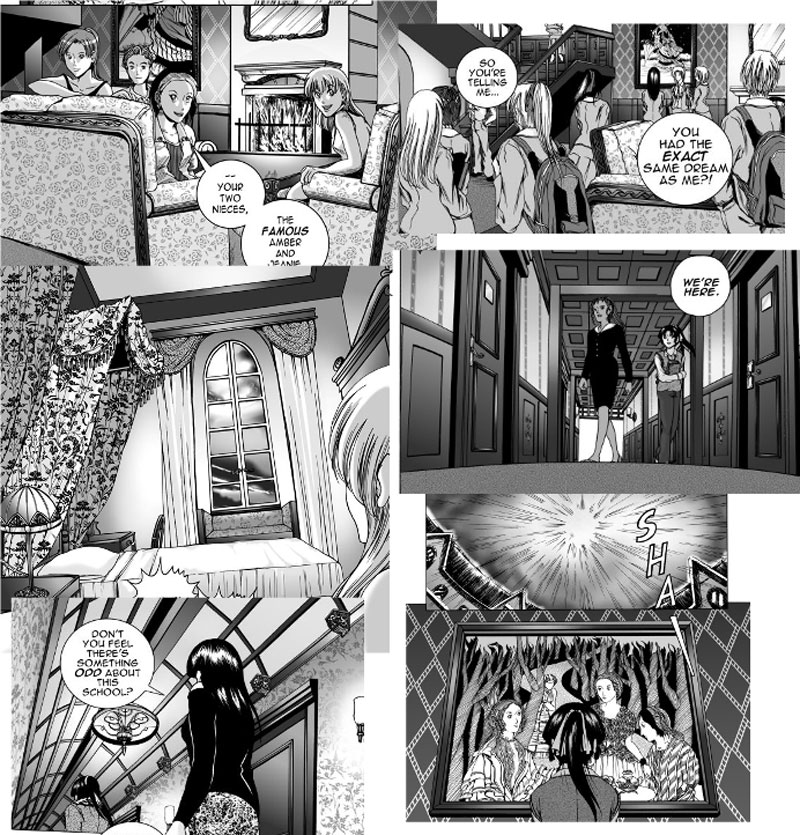
“The Dreaming” is a 3-book series I did in 2004-2007. It’s a horror story set in our world, and located entirely within a Victorian-era inspired school, with lots of dark wood panels, cluttered wallpaper, etc. As such, It’s a specific location created for this story, and I haven’t created a location that looks like this in any of my works since.
Readers remember this series mostly for how the school looks, and this is what you want to aim for when you create the visual design of a world. In this case, it’s not to draw a generic school, but a specific one that becomes a character within the story as well.
A second example is my other series “Fabled Kingdom” (see picture below). As you can see, this looks very different to “The Dreaming”, not just in what is being depicted, but also in the toning style of the series. “Fabled Kingdom” is a fairytale adventure world VS the gothic ghost story undertones of “The Dreaming“, and thus uses tones that are a lot less dark, and a more whimsical architecture style with less straight lines.
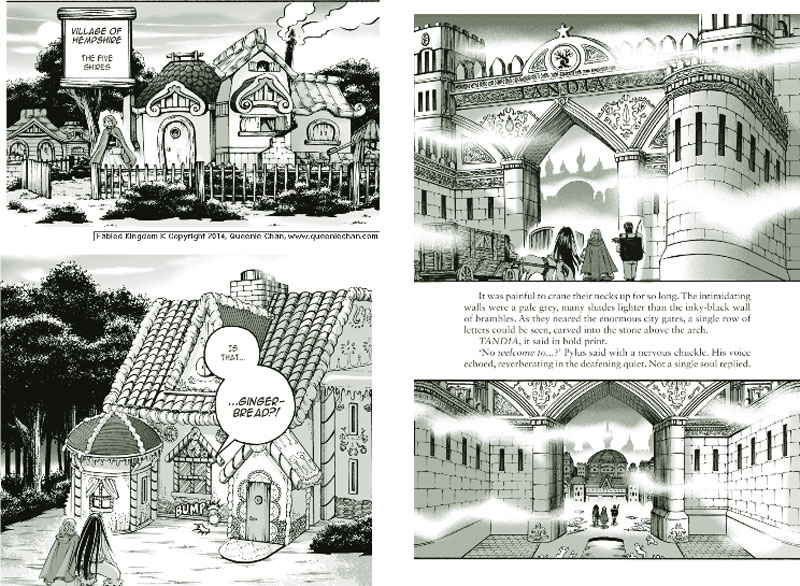
![]()
Tips for Creating Fantasy Castles/Cities
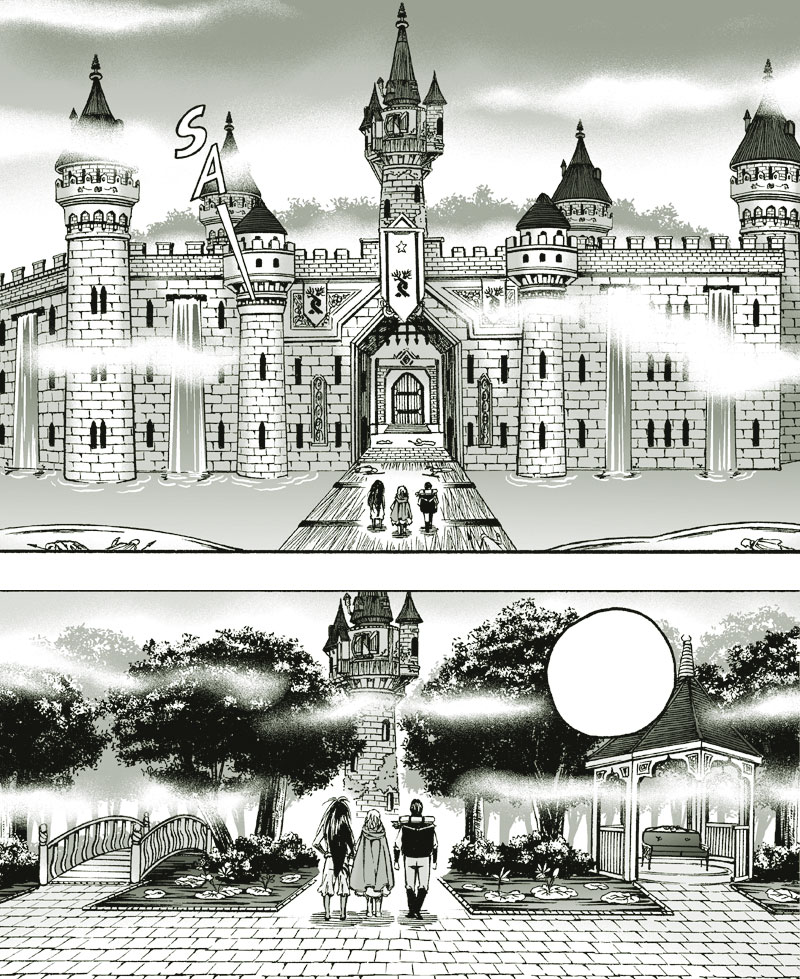
Here are some more scenes from “Fabled Kingdom”. When creating a fantasy location like a castle or a city, it’s a good idea to consider things like landscapes and mountains. That’s because to sustain life, you must have water, and also if you have plumbing, the slope of the land matters.
This seems like a minor issue that few people consider, but unlike the outlandishly fantastical lands depicted in fantasy/sci-fi posters or book covers, a comic book artist must create spaces that are 3-dimensional and lived in. This is because you have to visually depict your characters moving in and interacting with that space at all times, so it’s best to always think of space in a 3-dimensional way when creating any buildings. It may be difficult to do at first, but it will become easier as you change the way you think. For this same reason, the layout of the building also has to make sense.
To expand the scope a bit more, when creating the a castle or city, it’s a good idea to consider the skyline. Skylines that are striking can help differentiate different cities/castles from one another – for example, the skyline of Castle Roserock (see above) is one rectangle with five spires, with the middle one being the highest. You can integrate the history of the world and building into the skyline and floorplan of your buildings, which can be inspiring for writer-artists.
![]()
Tips for Fantasy Civilisations
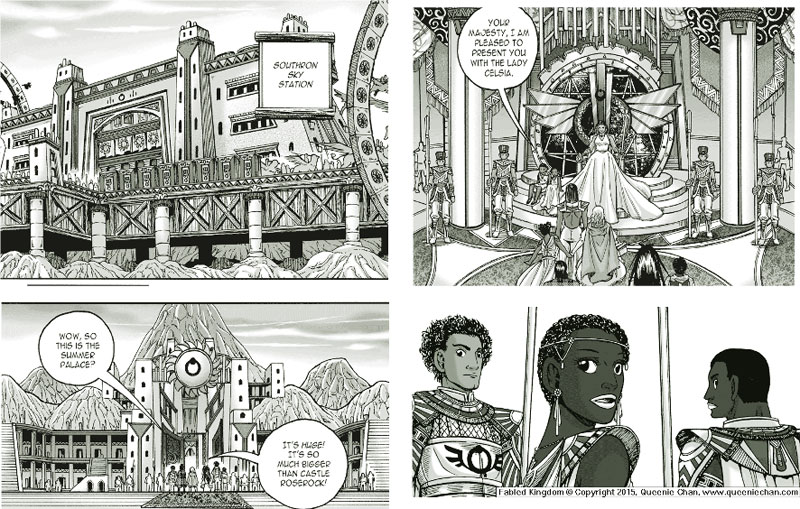
Creating distinctive and different-looking fantasy civilisations is always hard, since it’s common for creators to just stick to one style of architecture and only modify it slightly. This is lazy, but if it’s not well-thought out before one start creating, it’s easy to paint yourself into a corner because you’ve exhausted all your ideas for just the one civilisation and now can’t find the inspiration to do another, constrasting civilisation. One way to avoid this is to plan ahead, and conceive of each civilisation as collection of polygonal shapes. You can also use real life or history for inspiration.
You can see this in the examples above: Summerstone is inspired by Ancient Eygpt, and so uses a lot of trapeziums, triangles, and circles. Meanwhile, Fallinor (the western-style fantasy castle) uses mostly rectangles, triangles, and ovals. Motifs are also important, and a good way to differentiate between different civilisations. For example, being sun worshippers, there are sun motifs everywhere in Summerstone, including on the clothing of its people, whereas Fallinor has more flower/tree motifs.
![]()
One Piece: Using Shapes to World-Build
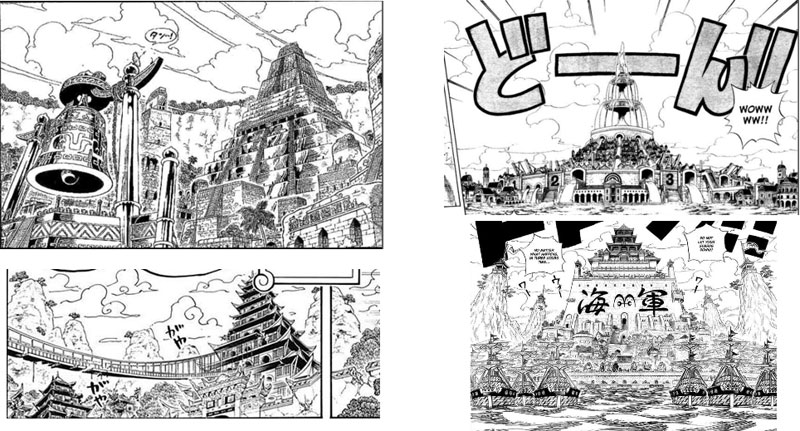
The popular manga “One Piece” is an example of utilising the “shapes” idea in its skylines. You can see here, that while the composition is similar in each of the two sets of skylines, the shapes used makes each location immediately and recognisably different. Once you’ve nailed the shapes, the small details can be fine-tuned to enhance differences.
I should also note that “One Piece” uses a lot of real-life civilisations for inspiration as well, which is a great help, and good fun for the readers. Even when they don’t use real-life inspiration, the shapes used in all the background designs are distinct, and therefore strong and memorable. “One Piece’s” unique art style makes everything look even more distinctive.
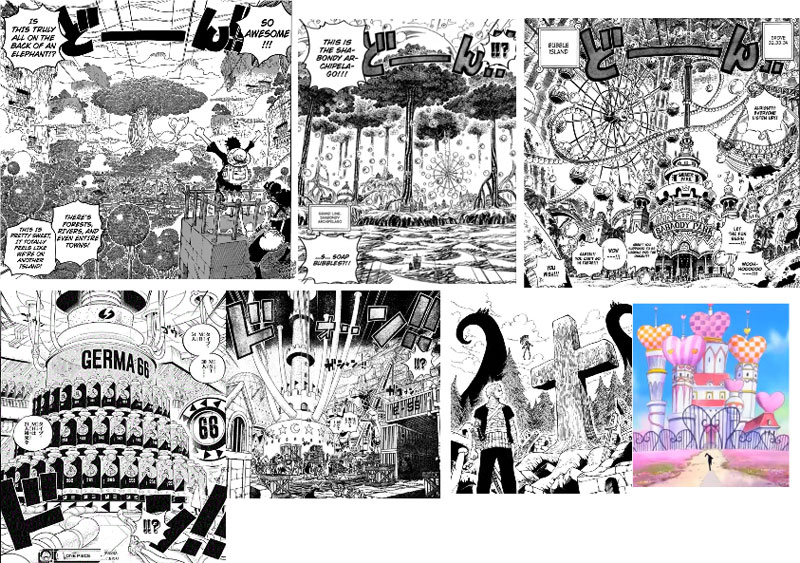
![]()
Final Things to Consider in World Building
- Terrain: is your country mountainous or mostly flat? Inland or by the sea? Swamps, marshes, deserts, rolling hills, forests, jungles, plains, rivers, valleys, lakes, and natural resources such as animals and minerals. All these things are important.
- What is the climate like? This affects your characters’ clothing style, and it also affects architecture. If your place has heavy snow or rain in Winter, then no one will ever build anything with a flat roof. If a place is very hot and has high humidity, the houses won’t be fully enclosed as to ensure the circulation of fresh air. If a place is prone to floods, then houses may be built on stilts. Tornados? Underground or in the rockface, etc
- If you build a city, it has to be close to a water source. However, not everything needs to have rivers and lakes – there are plenty of places that have underground water. People can build irrigation channels from underground water sources.
- Mythology, History and Religion can be a big influence on motifs and how a civilisation looks. Where do your people come from? Where do they think they come from? What is their history? Were they originally farmers, nomads, or did they sail to where they are now? Have they been enslaved before by a greater power? Are they themselves conquerors and slavers? Have any great cataclysms happened to them in the past that influenced them? And so on.
![]()
Thanks for reading this! Also, have fun! Study the history, politics, mythologies, religion, philosophies, biology, medicine and economics, etc of our world in order to come up with something believable!


